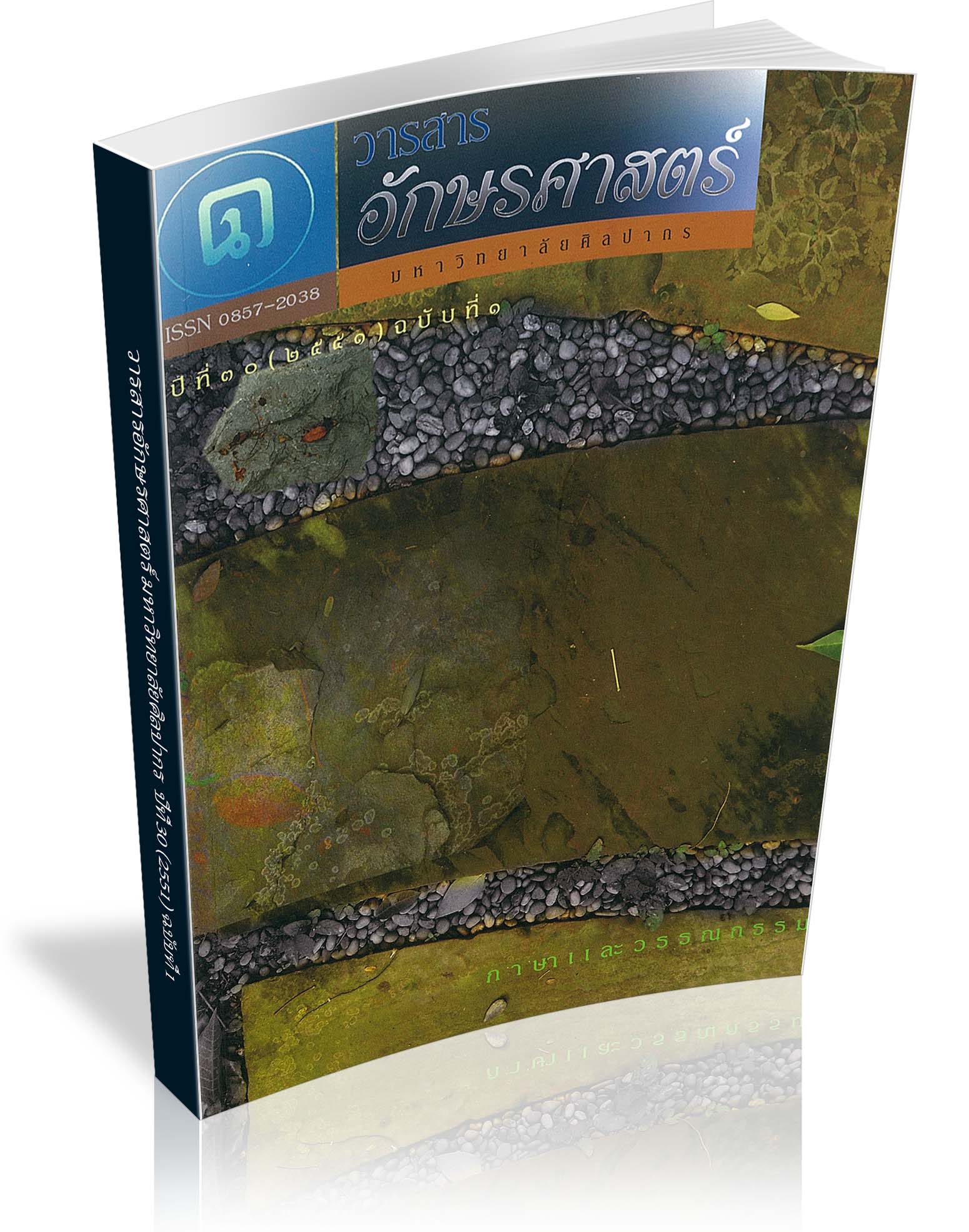Translation of Similes in The Pilgrim Kamanita
Keywords:
The Pilgrim Kamanita, translation strategies, figures of speech, simileAbstract
Found in almost every kind of writings, especially literary work, simile is one of the figures of speech which provokes powerful imagery and makes writing emotionally intense. However, it sometimes poses challenging translation problems to translators. This article introduces the translation strategies employed by Sathirakoses and Nagaprateepa, distinguished competent translators, in translating similes in The Pilgrim Kamanita, a masterpiece novel translated in the reign of King Rama VII. The research results show that the translators employed various translation strategies, including the strategies of varying words synonymous with 'like' or 'as', which proves the translators' remarkable expertise in languages and translation.
Downloads
References
ใจปอง ส้มลิ้ม. “การใช้ถ้อยคำแบบกวีนิพนธ์ในเรื่องกามนิต” วิทยานิพนธ์ปริญญามหาบัณฑิต สาขาภาษาไทย ภาควิชาภาษาไทย บัณฑิตวิทยาลัย มหาวิทยาลัยศิลปากร, ๒๕๓๒.
นวลผจง เศวตเวช. “วิเคราะห์เรื่องกามนิต.” วารสารมหาวิทยาลัยศิลปากร. ฉบับ ๑๐๐ ปี พระยาอนุมานราชธน. ๑๐ (มิ.ย. – พ.ย. ๒๕๓๒) : ๕๙-๘๕.
นันทา ขุนภักดี. “พระยาอนุมานราชธนกับการใช้ภาษาไทย.” เอกสารโครงการประชุมสัมมนาทางวิชาการฉลอง ๑๐๐ ปี ศาสตราจารย์ พระยาอนุมานราชธน. นครปฐม : มหาวิทยาลัยศิลปากร, ๒๕๓๒. (อัดสำเนา)
Dobrzyńska, T. “Translating metaphor : Problems of meaning". Journal of Pragmatics 24 (1995) : 595–604.
Duff, A. The Third Language : Recurrent problems of translation into English. Oxford : Pergamon Press, 1981.
Larson, Mildred L. Meaning-Based Translation. New York : University Press of America, 1982.
Downloads
Published
How to Cite
Issue
Section
License
ผู้เขียนบทความต้องยินยอมในข้อกำหนดต่าง ๆ ของวารสารก่อนส่งบทความตีพิมพ์




